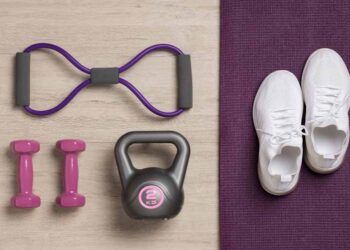In today’s fast-paced world, the quest for a healthy and balanced lifestyle has led many to discover the transformative power of Mindful Movement. This unique approach to fitness transcends the physical act of exercise, inviting men and women aged 25-45 to cultivate a deeper connection between mind and body. But what exactly is Mindful Movement? At its core, it represents the fusion of mindfulness—a practice rooted in being fully present and engaged with whatever we’re doing at the moment—with traditional physical activity. This harmonious blend not only enhances your physical well-being but also promotes mental clarity and emotional resilience.
The beauty of Mindful Movement lies in its simplicity and accessibility. Whether you’re a seasoned athlete or someone taking the first steps towards a more active lifestyle, incorporating mindfulness into your fitness routine can unlock profound benefits. From reducing stress and combating anxiety to improving focus and fostering a greater appreciation for your body’s capabilities, the advantages of Mindful Movement are both far-reaching and deeply personal.
As we delve into this topic, consider this quote from renowned mindfulness expert Jon Kabat-Zinn: “Wherever you go, there you are.” In the context of Mindful Movement, this serves as a reminder that the most important element in any fitness journey is not the destination, but the quality of presence we bring to each moment along the way.
Understanding Mindful Movement
Mindful Movement isn’t just a fitness trend; it’s a holistic approach that harmonizes the physical and mental aspects of exercise. By incorporating mindfulness—a practice focused on being fully present and engaged with our actions—into physical activity, Mindful Movement turns routine workouts into a rich, multi-sensory experience. This integration helps individuals not only to improve their physical health but also to achieve mental clarity and emotional balance.
The essence of Mindful Movement lies in its emphasis on awareness and intention. Rather than merely going through the motions, it encourages practitioners to tune into their bodies, noticing every movement, breath, and sensation. This heightened awareness not only prevents injury but also deepens the connection to oneself.
“Mindful Movement is about finding stillness in motion. It’s not just about the steps you take or the muscles you engage, but about nurturing a peaceful state of mind amidst it all.”
The Mind-Body Connection
The essence of Mindful Movement lies in understanding and nurturing the intricate relationship between the mind and the body. This connection is not just a philosophical concept; it’s a powerful reality that impacts our health, well-being, and quality of life. Embracing Mindful Movement allows us to bridge the gap between mental and physical health, leading to a more harmonious and balanced existence.
Scientific research has repeatedly shown that our mental state can significantly affect our physical health, and vice versa. Stress, for instance, is not just a psychological burden—it can manifest physically in the form of tension, headaches, and even chronic illnesses. Conversely, physical activity is not only beneficial for our bodies but can also elevate our mood and mental clarity. This reciprocal relationship underscores the importance of adopting practices that nurture both mind and body simultaneously.
Mindful Movement encourages us to pay attention to our bodies with kindness and curiosity, without judgment. By focusing on our movements and how they feel, we become more attuned to our physical state, which in turn, fosters a greater awareness of our mental and emotional states. This heightened awareness can lead to profound insights about our health, habits, and behaviors, empowering us to make positive changes.
“The mind can go in a thousand directions, but on this beautiful path, I walk in peace.”
Mindful Movement Practices
In the realm of Mindful Movement, the variety of practices available means there’s something for everyone, regardless of your fitness level or experience. These practices are not just exercises; they are invitations to deepen the connection between mind and body, to move with intention and awareness.
Integrating Mindful Movement into Daily Life
Incorporating Mindful Movement into our daily routines is a transformative step towards living a more balanced and centered life. It’s about making mindfulness a natural part of our everyday activities, turning ordinary moments into opportunities for presence and connection. Here’s how you can weave Mindful Movement into the fabric of your day-to-day life, enhancing both your physical and mental well-being.
Start with Simple Rituals
Begin your day with a short session of mindful stretching or yoga poses to awaken your body and focus your mind. Even just a few minutes can set a positive tone for the day ahead. Use this time to set an intention for your day, focusing on gratitude and presence.
Make the Most of Micro-Moments
Find mindfulness in the small moments. Whether it’s taking a deep, intentional breath before starting your car, or feeling the ground under your feet as you walk to the mailbox, these micro-moments of mindfulness can add up to a significant impact on your overall well-being.
Transform Routine Tasks
Turn mundane tasks into mindful experiences. Washing dishes, cooking, or even showering can become practices in Mindful Movement when approached with intention. Focus on the sensations, the movements of your body, and the rhythm of your breath, transforming routine chores into meditative practices.
Mindful Commuting
Whether you’re walking, driving, or taking public transit, commuting offers a perfect opportunity to practice mindfulness. Pay attention to your surroundings, the feel of the steering wheel or the rhythm of your steps. Listening to guided meditations or mindful breathing exercises can also turn your commute into a rejuvenating journey.
End Your Day Mindfully
Before bed, take some time to disconnect from digital devices and engage in a gentle yoga flow or some mindful stretching. Reflect on your day with gratitude, focusing on the positive moments and the lessons learned. This practice can help calm your mind and prepare your body for a restful night’s sleep.
“You can’t stop the waves, but you can learn to surf.”
As we’ve journeyed through the transformative world of Mindful Movement, it’s clear that this practice offers far more than just physical benefits. It’s a pathway to a deeper connection with ourselves, fostering a sense of presence and awareness that enriches every aspect of our lives. Whether through yoga, Pilates, Tai Chi, or simply integrating mindfulness into our daily routines, Mindful Movement invites us to pause, breathe, and truly inhabit the present moment.
Embracing Mindful Movement isn’t about adding another task to our busy schedules; it’s about transforming the way we approach our daily lives, turning ordinary activities into opportunities for mindfulness and connection. The beauty of this practice lies in its simplicity and accessibility—there’s no need for special equipment or advanced skills, just a willingness to engage with the present moment with openness and curiosity.














